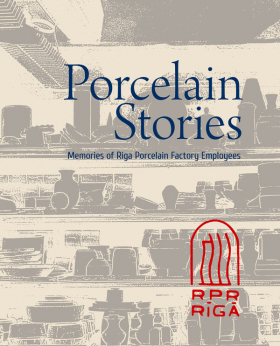-
NEWS
English translation of the interview collection Porcelāna stāsti. Rīgas Porcelāna rūpnīcas darbinieku atmiņas.The Riga Porcelain Museum is releasing a book—an English translation of the interview collection Porcelāna stāsti. Rīgas Porcelāna rūpnīcas darbinieku atmiņas.
Originally published in Latvian in 2020, the book was reissued in early 2024 due to public demand. The English version will be launched at the start of the New year with financial support from the State Culture Capital Foundation and the Riga City Council.
The English edition will provide readers with an in-depth look into Latvia's porcelain art and industrial history, including its various participants, values, and legacy they hve left behind. The use of oral history allows for a direct and authentic portrayal of people's thoughts, experiences, and perspectives. This is particularly significant in a context where political powers often seek to dominate and appropriate the cultural narratives of other nations.
The book gathers interviews with former employees of the Riga Porcelain Factory (RPR), spanning from the 1940s to the early 2000s. It includes the stories of workers, from the simplest form-makers and molders to factory directors. Unlike the Latvian version, the English edition features additional visual material to give a more comprehensive understanding of the period's industrial art, especially the porcelain industry. The translation is by Filip Jānis Birzulis, with editing and proofreading by Jayde Will.
Interviews in the book feature figures from both the factory's first and second production sites. Among them are artists, technicians, and managers, such as Iveta Aigare, Dace Blūma, Natālija Laminska, and Aija Strupe, who share their experiences of working at the factory. The stories also cover the factory’s liquidation in the 1990s, with insights into what happened to the building, the people, and the industry in the early 2000s.
The book is richly illustrated with over two hundred images, including historical photographs, object depictions, drawings, sketches, and documents from various archives, including the Riga Porcelain Museum, the Latvian National Museum of Art, and private collections. At 280 pages, it offers a vibrant panorama of Riga's industrial life in the second half of the 20th century, shedding light on the Soviet era from the individual’s perspective and exploring Latvia's often overlooked industrial culture. The English version aims to make this valuable cultural heritage accessible to a wider audience.

